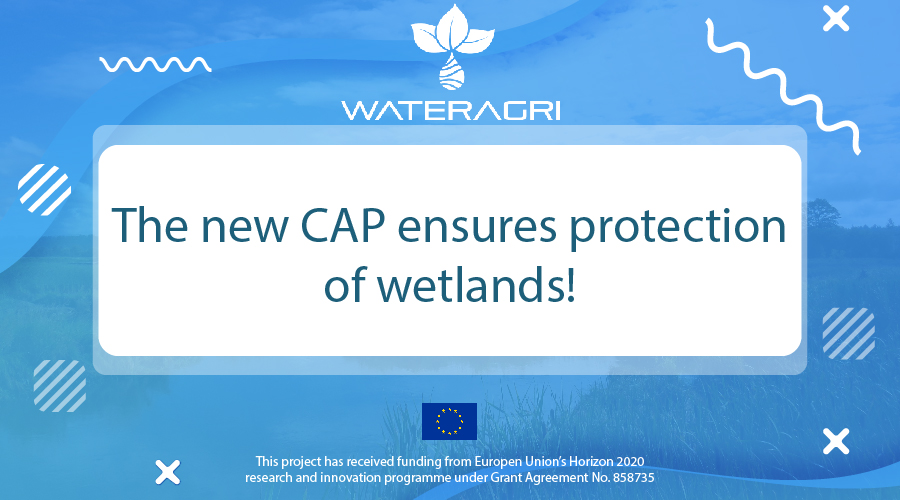The new EU regulations, such as the new Common Agricultural Policy (CAP) are disrupting the agri-world by highlighting the need for new water management practices. The new CAP specifically ensures wetland protection by introducing ambitious changes in its’ green payment conditions.
The Common Agricultural Policy is one of the EU’s oldest and most important policies. It has been designed as a policy to support European farmers and ensure Europe’s food security. Over the years, the Common Agricultural Policy has greatly contributed to environmental protection, sustainability, and biodiversity. Still, key environmental issues remain, hence the need to improve the CAP even further. The protection of the environment and climate will, therefore, be the core of the new CAP regulations.
The new CAP protects the wetlands by linking Conditionality (the minimum requirements CAP beneficiaries must comply with to receive income support) to the environment- and climate-friendly farming practices and standards known as ‘Good Agricultural and Environmental Conditions’ (GAECs) and Statutory Management Requirements (SMRs). GAECs are set as standards of environment protection, with a focus on water and soil protection, among other issues. There is a total of 10 GAECs in the future CAP, an extra 3 new GAECs compared to the current CAP. GAEC 2 explicitly states that each Member State must ensure appropriate protection of wetland and peatland due to their important role of being stores of carbon (which, if released into the atmosphere, would fuel climate change).
The new CAP, therefore, provides the basis for projects such as WATERAGRI, since a significant part of the project is dedicated to the protection and promotion of wetlands. WATERAGRI will evaluate long-term benefits for the farm and the local ecosystem from the implementation of water retention systems and measures with the support of water management organizations such as CER in Italy (e.g., ANBI (Italian association of 151 agricultural water boards) and Irrigants d’Europe (about 75% of the irrigated land in the EU)). In addition, WATERAGRI will assess the potential of nutrient recovery for the use of growing crops, identify and test farm constructed wetland technologies, where biodiverse constructed wetlands remove pathogens and produce biomass for energy, and converge into agricultural space, utilizing effluent water and nutrients to produce crops.
